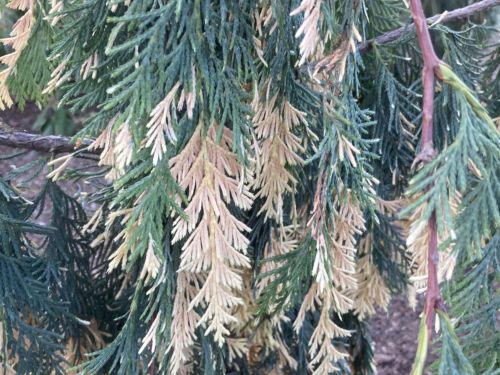
Types of Cypress Trees: A Comprehensive Guide
Cypress trees are a diverse group of coniferous plants belonging to the family Cupressaceae. They are known for their evergreen foliage, distinctive cones, and adaptability to various climates and soil types. This article explores the different types of cypress trees, their characteristics, uses, and care requirements.
Table of Contents
- Introduction to Cypress Trees
- Characteristics of Cypress Trees
- Types of Cypress Trees
- 3.1 True Cypresses (Genus Cupressus)
- 3.2 False Cypresses (Genus Chamaecyparis)
- 3.3 Bald Cypresses (Genus Taxodium)
- Uses of Cypress Trees
- Growing Conditions and Care
- Common Diseases and Pests
- Conclusion
- FAQ Section
1. Introduction to Cypress Trees
Cypress trees have been valued for their beauty, durability, and ecological significance for centuries. They are often found in wetland areas but can also thrive in drier landscapes, making them versatile choices for landscaping and forestry.
Importance of Cypress Trees
- Ecological Role: Provide habitat for wildlife and help prevent soil erosion.
- Cultural Significance: Often used in traditional architecture and landscaping.
- Economic Value: Their wood is prized for its resistance to decay.
2. Characteristics of Cypress Trees
Cypress trees exhibit several distinct features that set them apart from other conifers:
- Foliage: Most cypress trees have needle-like leaves when young, which become scale-like as they mature.
- Growth Habit: They can range from tall, columnar forms to broad, spreading shapes.
- Cones: Cypress cones are typically small and woody, containing multiple seeds.
3. Types of Cypress Trees
Cypress trees can be categorized into three main groups based on their genus:
3.1 True Cypresses (Genus Cupressus)
This genus includes several species commonly referred to as true cypresses.
| Species Name | Common Name | Characteristics |
|---|---|---|
| Cupressus sempervirens | Mediterranean Cypress | Tall, narrow growth; drought-tolerant; used as a windbreak. |
| Cupressus macrocarpa | Monterey Cypress | Iconic coastal tree; resistant to salt spray; often used in landscaping. |
| Cupressus arizonica | Arizona Cypress | Blue-green foliage; grows well in arid conditions; popular for Christmas trees. |
| Cupressus goveniana | Gowen Cypress | Endemic to California; attractive blue-gray foliage; limited distribution. |
| Cupressus nootkatensis | Nootka Cypress | Also known as Alaska cedar; weeping habit; ornamental value in gardens. |
3.2 False Cypresses (Genus Chamaecyparis)
False cypresses are not true cypresses but share similar characteristics.
| Species Name | Common Name | Characteristics |
|---|---|---|
| Chamaecyparis lawsoniana | Lawson’s Cypress | Columnar shape; attractive foliage; often used in ornamental gardens. |
| Chamaecyparis obtusa | Hinoki Cypress | Known for its fragrant wood; popular in Japanese gardens; slow-growing. |
3.3 Bald Cypresses (Genus Taxodium)
Bald cypresses are unique for their ability to thrive in wetland areas.
| Species Name | Common Name | Characteristics |
|---|---|---|
| Taxodium distichum | Bald Cypress | Grows in swamps; has distinctive “knees” that protrude from the ground; deciduous conifer. |
| Taxodium mucronatum | Montezuma Cypress | Native to Mexico; prefers wet conditions; large tree with broad crown. |
4. Uses of Cypress Trees
Cypress trees have various applications in landscaping and forestry:
- Ornamental Uses: Many species are cultivated for their aesthetic appeal in gardens and parks.
- Timber Production: The wood is durable and resistant to decay, making it suitable for outdoor furniture, fencing, and construction.
- Erosion Control: Their extensive root systems help stabilize soil in wetland areas.
5. Growing Conditions and Care
Cypress trees generally prefer well-draining soil and full sun but can adapt to a range of conditions:
- Soil Requirements: Most species thrive in sandy or loamy soils but can tolerate clay soils if drainage is adequate.
- Watering Needs: Young trees require regular watering until established; mature trees are more drought-tolerant.
- Pruning: Minimal pruning is needed except to remove dead or damaged branches.
6. Common Diseases and Pests
Cypress trees can be affected by various diseases and pests:
| Issue | Symptoms | Solution |
|---|---|---|
| Root Rot | Wilting leaves, stunted growth | Improve drainage; avoid overwatering |
| Aphids | Sticky residue on leaves | Use insecticidal soap or neem oil |
| Bagworms | Webbing on branches | Handpick or use appropriate insecticides |
7. Conclusion
Cypress trees offer beauty, ecological benefits, and versatility in landscaping applications. Understanding the different types of cypress trees and their care requirements can help gardeners make informed choices for their landscapes.
FAQ Section
Q1: How fast do cypress trees grow?
A1: Growth rates vary by species but generally range from moderate to fast growth, with some species growing up to three feet per year under optimal conditions.
Q2: Can cypress trees tolerate flooding?
A2: Yes, certain species like bald cypress thrive in wetland conditions and can tolerate flooding.
Q3: Are cypress trees susceptible to any diseases?
A3: Yes, common issues include root rot and pest infestations such as aphids and bagworms.
For more detailed information about cypress trees, you can visit Wikipedia.


